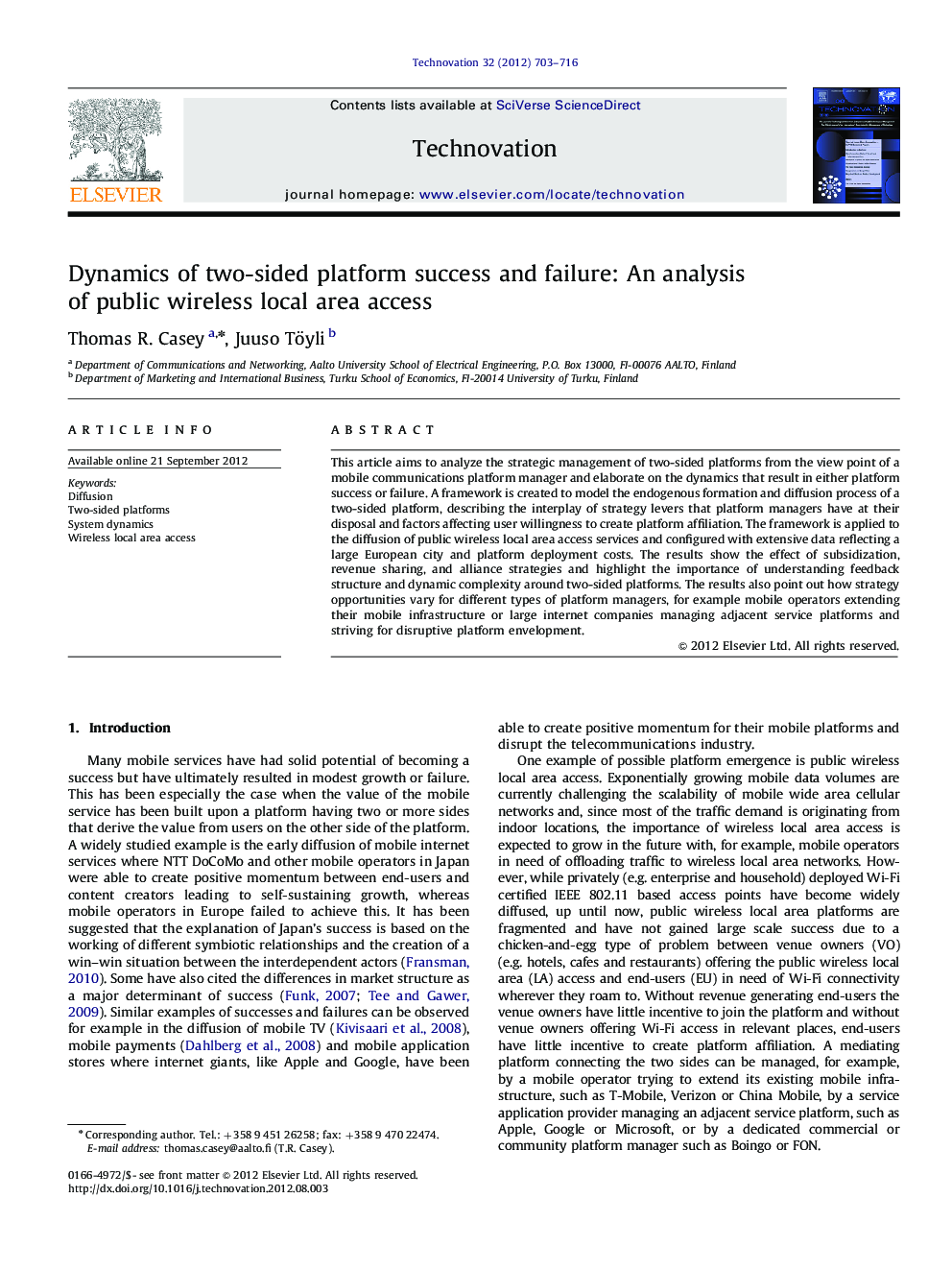| Article ID | Journal | Published Year | Pages | File Type |
|---|---|---|---|---|
| 1022106 | Technovation | 2012 | 14 Pages |
This article aims to analyze the strategic management of two-sided platforms from the view point of a mobile communications platform manager and elaborate on the dynamics that result in either platform success or failure. A framework is created to model the endogenous formation and diffusion process of a two-sided platform, describing the interplay of strategy levers that platform managers have at their disposal and factors affecting user willingness to create platform affiliation. The framework is applied to the diffusion of public wireless local area access services and configured with extensive data reflecting a large European city and platform deployment costs. The results show the effect of subsidization, revenue sharing, and alliance strategies and highlight the importance of understanding feedback structure and dynamic complexity around two-sided platforms. The results also point out how strategy opportunities vary for different types of platform managers, for example mobile operators extending their mobile infrastructure or large internet companies managing adjacent service platforms and striving for disruptive platform envelopment.
► We model the dynamics of two-sided platforms. ► We create a framework of the endogenous diffusion process of two-sided platforms. ► We apply the framework to diffusion of public wireless local area access services. ► Results illustrate effect of subsidization, revenue sharing and alliance strategies. ► Results highlight importance of understanding endogenous feedback structure.
